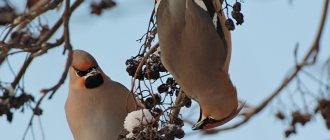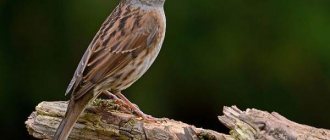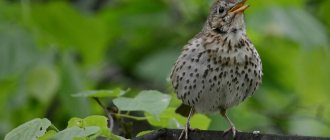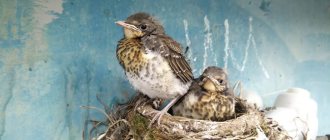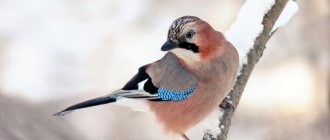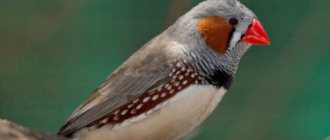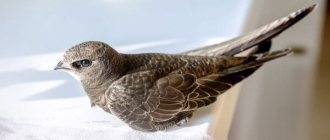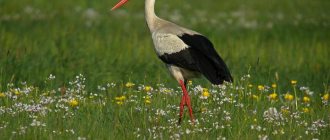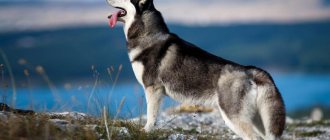This article will focus on the diurnal birds of prey on our planet.
A bird of prey is one that pursues other animals in order to get food for itself, that is, it hunts in flight. Diurnal birds of prey use their keen vision, curved beaks and strong talons to hunt live prey. There are about 300 species of diurnal birds of prey in the world, including about 50 species found in Russia.
The order "Durnal Birds of Prey" is divided into two categories of diurnal hunting - Falconiformes and Accipitriformes: Falconiformes (Falconiformes) and Accipitriformes, respectively. Accipitridae have 4 classes: Accipitridae (the largest in number), Ospreys, Secretaries and American vultures. But there is also a detachment of nocturnal birds of prey - Strigiformes, which belong to the Owl species (Owls and Barn Owls).
Hawk
The very name of this bird means “swift, fast, vigilant.” Such birds are of medium size, and even the largest representatives of the hawk subfamily do not weigh more than one and a half kilograms. Their beak is strong, curved, short, and their legs are equipped with powerful muscles.
They live and hunt in forest thickets, from the thickets of which, thanks to cunning, dexterity, maneuverability and excellent hearing, they attack their victims in the most unexpected way, strangling them with their claws. Their prey is mainly small birds, as well as mammals, snakes, amphibians, and insects.
Hawks are distributed on almost all continents of the planet, excluding zones of eternal cold, and are also found on many famous large islands. The characteristic features of their appearance should be considered blunt, short wings; wide and long tail; Most often, the main tone of the plumage on the top is gray or brown and the underparts are light, often with complex patterns.
The strong paws of hawks, with sharp claws, squeeze the victim like a vice
What does it look like
— Advertising —
Falcon flaps its wings
The scientific name Falco comes from the word "falx", which means "sickle" - the sickle shape of the wings distinguishes falcons from other species of birds. Birds' wings are long and wide, thanks to which falcons are able to rise high into the sky and soar freely. The falcon feather is hard and glossy.
Photo of a falcon close up
The body of falcons is knocked down, rounded; The chest is wide and convex. The tail is long and shaped like a wedge. The head is large; the beak is small, strongly curved down. There are sharp teeth on the beak. The eyes are large, the skin around them is bare. The paws are thick, of medium length, four-toed.
— Advertising —
Evil look of a falcon
The color of the feather is individual for each individual species. Gray and brown tones predominate in most bird species. The plumage is not monochromatic - the main color is diluted with streaks and strokes of different sizes and colors. The irises of the eyes are usually black, the paws are bright yellow, sometimes feathered.
Vulture
Not all predators prefer fresh meat and hunt for living prey; there are also scavengers among them. The vulture is a relative of the hawk. And both of these birds are members of the same hawk family. But unlike the relatives just described, vultures eat carrion, that is, the corpses of fish, reptiles and small mammals.
They look for their prey from a flight altitude, and often find it in a cluster of magpies, crows and kites, which also have a taste for carrion. Having fallen down like a stone, the vultures rush to the desired prey. And if the corpses are large, a dozen or more of these birds can gather around them.
Vultures are creatures that do not inspire sympathy with their way of life and feeding. And they don't look particularly attractive. First of all, their feather outfit is painted in mourning tones. Their beaks are hooked. The necks are bare, long, but ugly curved, like snake heads, with the impression that they are pulled into the shoulders; and huge goiters stand out on them.
These are very large birds of prey . The largest of them are capable of growing up to 120 cm in height. And their huge wings with a three-meter span are impressive. But in essence, such creatures are harmless, although somewhat gloomy in appearance, and are even environmental health workers. The range of giant scavengers is also extensive and spreads almost all over the world, but most of these birds are in Africa.
Vultures are one of those predators that love to feast on carrion.
Banana Warbler (Coereba flaveola)
The small and colorful banana warbler is found primarily in Central and South America. The birds are most common at low altitudes and less common in high mountain forests. Large populations are present in open grasslands, open woodlands, dense tropical rainforests, and even some desert areas. There are 41 recognized subspecies of these birds in the world. The size of the bird varies among different subspecies from 10 to 13 cm.
Banana warblers have black-grayish upperparts and bright yellow underparts. They have a thin, curved beak that is dark in color. A long white eyebrow is located just above the eye, and a white patch is visible on their usually black wings.
Tiny banana warblers are very active birds that tend to be solitary and nomadic. They make no claims to individual territories. Both male and female banana warblers build their own ball-shaped nests using leaves, grass and plant fibers before the breeding season begins. Banana warblers are often compared to hummingbirds because their sharp, curved beaks are excellent for extracting nectar from flowers. They also enjoy eating many types of fruit, including ripe bananas, insects and other small arthropods.
Kite
In flight, the kite is tireless and can be invisible in the sky, it soars so high. Such creatures are able to soar for up to a quarter of an hour without a single flap of their narrow and long wings, but their reactions are slow, and their behavior is lazy and clumsy. Sometimes they make melodious trills, in some cases they make sounds similar to neighing.
Kites have a variety of colors, but for the most part they are dark. Their legs are short and their weight is no more than a kilogram. The fingers and beak are weaker than those of a hawk, and the claws are less curved. Mostly kites consume carrion, but sometimes they also hunt live prey: hares, bats, crustaceans, fish, and other small organisms.
They live on the coasts and swamps of Eurasia, Africa, and Australia. They stay and fly in groups. These birds are still classified in the same hawk family.
Sarych
This feathered creature from the genus of buzzards is of medium size. The color of the feathers of such birds can vary, from dark brown to fawn, however, it may also turn out to be black. They live in Eurasia, inhabiting steppes, forest glades, and hills covered with coniferous trees. Some species are found in Russia, but winged heat-seekers fly to Africa for the winter.
Buzzards, along with golden eagles, belong to the category of birds of prey in the Moscow region . They hunt wild rabbits, gophers, rats and other small rodents. In extreme situations, such creatures are capable of attacking people if they are protecting their nests, sensing a threat to the chicks. But this rarely happens.
The tail of raptors acts as a rudder, allowing the bird to control its flight
Natural enemies of red falcons
Photo: What a falcon looks like
Falcons have no sworn enemies in the wild. Naturally, four-legged predators such as foxes, badgers, wolves or raccoons will not refuse to feast on eggs or eat young chicks, but this can be fraught with danger for the predator itself.
The peculiarity is that falcons are birds with a highly developed social system that live in groups. And if the clutch or chicks are in danger, then all adult birds will protect their own.
Even a large predator cannot resist the massive attack of miniature falcons. In the scientific literature (as well as in documentaries) there are plenty of examples of how a group of birds drove away such large predators as a wolf or a fox from their nesting area.
It is also not easy for winged predators such as eagles or hawks to catch falcons, which demonstrate wonders of resourcefulness in the air. The greatest threat to birds is people. Firstly, birds are often shot by beekeepers. The fact is that falcons can settle not far from large apiaries and consistently and daily destroy the bee population. Secondly, modern pesticides and other toxic substances used to poison insects pose a great danger to birds. Birds often catch insects and end up getting sick or dying themselves.
Eagle
Continuing to describe hawks, it is impossible not to mention eagles. These are rather large representatives of the family, having a height of about 80 cm. But their wings are short but wide. In addition to Eurasia, they are found in North America and Africa, often nesting in tall trees, rocks, or simply on the ground.
Soaring in the sky, they look out for their prey, which can be any living creature of medium size. In some cases, eagles are able to be satisfied with carrion. Such birds are distinguished by a proud profile, strong muscles and lush plumage. Their eyes are inactive, so in order to look around, they have to turn their head from side to side.
Powerful wings provide eagles with swiftness and agility.
Golden eagle
This is a bird from the genus of eagles. She has a strong, powerful, resilient body and has the art of soaring in the sky for hours, catching favorable warm air currents with her large open wings. Their close relatives differ from the eagle in their elongated tail, which opens wide in flight, like a fan, which helps in controlling movement.
It is interesting that the sounds that birds of prey of this kind make are similar to the barking of a dog. In general, representatives of all species from the genus of eagles are famous for the art of soaring in the sky. The structure of their body, especially the wings, can safely be called an aerodynamic miracle.
Of the flying fauna currently living on the planet, eagles and related birds are capable of soaring into the sky the highest. Golden eagles soar only by making minor movements with the tips of their wings. And the more they are in this state, the more chances they have to look out for prey from a great height.
Golden eagles can detect prey 3 km away, even underwater and in the dark
American Siskin (Carduelis tristis)
This small migratory bird is widely distributed throughout much of North America. American Siskins prefer forest edges, plains, fields, floodplains and orchards. They are often attracted to areas with high concentrations of thistles, aster and other foliage plants.
Their size ranges from 11 to 13 cm in length and from 11 to 20 grams in weight. Females are slightly duller than the colorful males. Male siskins are bright yellow during the breeding season. They have yellow or gold feathers around the throat, upper back and belly. Their wings, tails and crowns are glossy black. You can also see white spots above the tail, which usually appear on males after molting and in their summer plumage. American Siskins have conical, pointed beaks that are ideal for eating seeds, weeds and even pine cones.
American Siskins are diurnal and usually gather in small groups. They exhibit the typical undulating flight of finches. American Siskins are nomadic, often settling in place for short periods of time before moving on again. During the winter, they migrate from the southern Canadian border to the United States and Mexico.
Albatross
Since we are talking about the art of soaring, it is simply impossible not to talk about the albatross family, whose members are sea predators. For the most part, all types of albatrosses have white plumage, sometimes the tips of the wings and some other places have a dark edging. The largest member of the family is the royal albatross.
The body weight of such birds can exceed 10 kg, and their wingspan reaches 3.7 m. Albatrosses are distributed mainly in the ocean waters of the Southern Hemisphere. They are often found on islands remote from other parts of the land, where they raise their chicks.
They feed on marine invertebrates. Looking out for their prey, they soar above the waves. And having noticed something interesting, they are forced to either go down to the water surface or rise higher from it. And something like this also requires great skill.
Calypte costae
They are the second smallest birds in the world with an average length of 7.6 cm and a weight of 3 grams. They are usually found in the southwestern United States and Mexico, preferring to settle in desert areas with an abundance of nectar and small insects. Calyptus Costa has perhaps the most impressive plumage of any bird on our list. Its back is an iridescent green color with a shiny stripe of bright purple on its head and neck. Adult females can be identified by a small tuft of purple feathers in the center of the throat; the throats of other individuals are completely white. In both sexes the bill is dull black; The iris, legs and feet range in color from dark brown to black.
Calyptus Costas are solitary throughout most of their lives, except during the breeding and migration seasons. Females often make loud sounds to indicate food sources, prey, enemies, and readiness to mate. Males rarely call except when alarmed or during courtship displays. Females build nests mainly in bushes or trees, usually arranging them at a height of 1-2 meters above the ground. The seasonal clutch consists of only two eggs. The young reach sexual maturity during the first year of life and take part in the next breeding season.
They are omnivorous birds, although they feed mainly on flower nectar, preferring honeysuckle and lavender. To satisfy their need for protein, they also hunt small insects, catching them on leaves, branches or tree trunks.
Petrel
This is also a sea soaring predator, a relative of albatrosses, belonging to the same order. The courage of this bird and the beauty of its flight were sung by poets and writers and reflected in their masterpieces by artists. The shearwater family is numerous. One of its members is the common petrel.
It does not belong to the category of large ones, usually not exceeding 35 cm in size. Such birds are common in the Azov and Black Seas, as well as in the waters of the North Atlantic. Their plumage is dark above and white below. These predators feed on crustaceans, mollusks and small fish.
Falcon
When talking about the families of birds of prey , you should definitely remember falcons. First of all, their representatives are the falcons themselves. How do these birds differ from hawks? They are larger and grow on average up to 60 cm, and the weight of the most prominent ones reaches 2 kg. Falcons have sharp wings, not at all like the short and blunt wings of a hawk.
Their eyes are not yellow, like the latter, but dark brown, and their tail is noticeably shorter. Falcons fly swiftly, pounce on their victims from a great height, tear them apart with their talons, and then finish them off with their strong beak. Such birds are widespread around the planet, like many other members of the falcon family.
Peregrine Falcon
This feathered predator from the genus of falcons is famous for its flight speed, which is up to 90 m/s. The bird's swiftness is most evident during steep dives, but not during horizontal movement. The size of such birds is no more than half a meter, although the size, as well as the feather color, depend on the species. But one particular detail is interesting.
There are no feathers around the peregrine falcon's large, watchful eyes, which have a third eyelid. And therefore their dark brown eyes appear to be emphasized by yellow outlines. Such birds attack mainly other medium-sized birds, pigeons, starlings, blackbirds, and less often gophers, squirrels and hares. Voles and snakes also become their victims. The peregrine falcon attacks most often at the moment of a vertical fall, killing its prey with a crushing blow.
All the characters presented above are diurnal birds of prey . And this means that they get their food during daylight hours. But nature itself took care of the feathered hunters, dividing their spheres of influence. That is why there are some of them who go out hunting at night.
The peregrine falcon is the fastest creature on Earth, the speed of “falling from the sky” reaches 320 km/h
Bee Hummingbird (Mellisuga helenae)
The title of the world's smallest bird belongs to the Bee Hummingbird, which can be just 5 cm long. It is also the lightest bird in the world, weighing less than 2 grams, and has the world's smallest nest, measuring 2.5 cm in diameter, where it lays its eggs. the size of a pea. The bee hummingbird is native to Cuba, where it is also known as the zunzuncito, elf bee, and flybird.
This species of hummingbird prefers areas with a large number of solandras, which are their favorite source of nectar. These birds can be found in coastal and inland forests, mountain valleys, swamps and gardens. When bee hummingbirds suck nectar from flowers, they hover near the buds, flapping their wings up to 200 times per second. They can even fly for up to twenty hours without stopping, reaching speeds of up to 48 km/h!
As is often the case with other hummingbirds, their shoulder joints allow their wings to rotate 180 degrees, and their small feet and legs can only be used for perching. The Bee Hummingbird can fly straight up, down, backwards and even upside down. She soars by moving her wings in a figure eight shape.
Bee hummingbirds are diurnal. They also adapted to cool weather at night through torpor. On cold nights, their body temperature, which is usually 41 degrees Celsius, drops to an air temperature of about 30 degrees Celsius. This allows the tiny birds to save energy. In all areas of life except breeding, bee hummingbirds usually lead a solitary lifestyle.
Bee hummingbirds consume nectar and insects every day, the weight of which is comparable to their own weight. They prefer nectar with a sucrose concentration of up to 30%. Due to their fast metabolism, bee hummingbirds require large amounts of nutrients, so they spend up to 15% of their time eating.
Owls
Nocturnal predators include members of the owl family. They have a variety of colors, most often directly corresponding to their habitat. Their sizes also vary depending on the type. There are 214 varieties in total.
Eagle owls should be considered the largest of the owls. The body weight of such giants can reach up to 4 kg. In comparison with them, sparrow owls look like real dwarfs, whose size and weight are about four times less.
The appearance of owls impresses both with the proportions of the body and its other details. Here it is worth mentioning the large round head, pronounced facial contours, huge eyes glowing in the night, as well as unusual, shaggy plumage with a complex pattern. Their beak is hooked, as befits a bird of prey.
The paws are grippy and strong, and the curved sharp claws enable the birds to successfully catch and hold prey. Moving through the air at night, owls do not create noise and reach speeds of up to 80 km per hour. They feed on snakes, lizards, rodents, and other small living creatures. For the most part, such winged creatures are found in taiga forests.
Owls are active in the dark, thanks to their hearing and large eyes.
Night birds of prey
Owls are nocturnal predators. These are birds known to everyone, which have been repeatedly mentioned in children's fairy tales.
Features of the appearance of an owl:
- large, bulging eyes;
- disc-shaped oval face with peculiar plumage;
- the size of the female is larger than the size of the male;
- dull, gray color;
- the feathering of the legs extends to the claw zone;
- wide, long and rounded wings;
- acute vision and hearing;
- the ability to fly silently, which gives owls a privilege in night hunting.
Owls exterminate various rodents, while bringing great benefits to people. Therefore, they are protected by law from poachers and simply those who like to make fun of living beings.
Snowy owl (or snowy owl)
A very colorful nocturnal predator that lives in the steppes and tundra forests. Hunts voles, partridges, hamsters - lemmings . Sometimes they catch hares and even arctic foxes and stoats.
The small peoples of the north often consumed owl meat for food, and for this purpose they hunted it.
Barn owls
The category of nocturnal birds of prey also includes birds from the barn owl family. In their appearance, these creatures partly resemble owls. Their facial disc, like those described above, is also clearly defined, only it narrows downwards, taking the form of a heart-shaped triangle.
And they themselves look more graceful, their wings are pointed, and their head is narrow compared to an owl. The silent flight of barn owls when they hunt for various small animals is betrayed by their specially designed, fluffy feathers. Such predators live on all continents, excluding the cold Antarctica.
Bittern
This bird from the heron family does not hunt in flight and its beak is not hooked, but still it should be classified as a predator, because it feeds on frogs, fish and other underwater and near-water inhabitants, which it catches with great skill.
And although such creatures living in swamps obtain their food without using wings, the abilities given to them by nature in this matter are so amazing that they are simply impossible not to describe. Bitterns usually hunt at night in reed thickets or reeds near the water.
And while waiting for prey, they are able to freeze almost motionless, without changing their position for a long time. Being similar in color to the stems of the mentioned plants, even in daylight they blend in so completely with them that it is often absolutely impossible to notice hunters.
But if the prey is nearby, such a bird will not yawn. The bittern will show miracles of agility and even demonstrate acrobatic abilities. Bittern dragonflies are caught on the fly. And in the water, a long, pointed beak, similar to forceps, helps them grab prey.
Among birds of prey , the calls emitted by these creatures can perhaps be called the most remarkable. These are powerful, heartbreaking sounds, similar to the hum of a trumpet, spreading in the swamp silence throughout the area for several kilometers.
Social structure and reproduction
Photo: A pair of red falcons
The mating season for falcons begins in mid-May. The courtship process is very interesting. At this time, the male flies over the female, describing funny somersaults in the air. In addition, the falcon makes clicking sounds and tries to dance. Falcons do not build nests. Instead, they prefer to occupy other people's nests, driving out the birds that built them. As a rule, winged predators occupy the nests of magpies, crows, rooks and even herons. Also, tailbones can settle in hollows of trees or in crevices in rocks.
Interesting fact: Such a late breeding season is associated with natural cycles. The fact is that large insects (such as dragonflies and locusts) appear only towards the end of spring, and without them falcons will not feed their offspring.
In most cases, a falcon clutch contains 4-6 eggs, which the female and male incubate alternately. The process of incubation of eggs lasts at least 25 days. After the chicks hatch, the female is always with them. The male, in turn, provides food for both the female and the chicks. It must be said that the chicks are very voracious and the male has an extremely difficult time. For a whole month he catches insects with short breaks and takes them to the nest.
The chicks leave the nest a month after they are born. By the end of August (2 months from the moment of birth) they become completely independent and when the time of seasonal migration comes, young falcons fly along with adults. On average, the lifespan of red falcons is about 15 years. However, in captivity, with proper care and nutrition, falcons can live up to 25 years.
Marabou
Such birds belong to the stork family. Their Arabic name, adopted by us, characterizes them as wise birds. This is exactly how the word “marabou” is translated. These are tall creatures, whose height can be about one and a half meters. Their plumage consists of white and black areas.
Their legs are as long as those of storks, however, when flying they bend their necks rather than stretch them, which makes them look like herons. Curious features of such birds are a bald head, as well as a skin sac of such impressive size that it hangs down to the chest.
Their beak is long, thin, cone-shaped. It is used to kill small creatures such as rodents, lizards, frogs; in addition, these birds feed on insects and very often carrion. Some species of marabou live in Africa, and these birds are also common in South Asia.
Brown Gerygone Mouki
The brown gerygone, also known as the brown warbler, lives in the coastal and montane rainforests, wet gullies and mangroves of eastern Australia. This is one of the smallest birds of the passerine family. It grows to a maximum of 8-10 cm in length and weighs about 6 grams.
The brown gerygone has an olive-gray upperparts and a creamy underparts. He has a long white eyebrow and red-brown eyes. The tail stripe is dark and the tips of the tails are white. Brown heryons are usually found in pairs or small groups of three or four individuals. They spend most of their time on the tops of trees, among the foliage of which they try to catch flying insects. Brown heryons build a nest with a rounded dome and tapering "tail" from roots, plant fibers, spider webs, moss and lichens. The nest is suspended from a low branch or vine. It is noteworthy that both parents feed the young.
Kea parrot
This resident of New Zealand is famous for his special intelligence, playful disposition, curiosity and trust in people. The height of such parrots is slightly less than half a meter. The color is quite noticeable and consists of brownish, green, olive and red tones.
Keas inhabit forests and are often found in the mountains. And although they often feed on fruits and nectar, spinning around human habitation in search of suitable delicacies from garbage waste, they are still predators; in conditions of severe food shortages, kea attacked flocks of sheep, pecking out large wounds on their backs, due to why the animal died.
Crow
Among the names of birds of prey there is a place for these common and well-known birds from the order Passeriformes. But despite their relationship with the winged little thing, these creatures are far from small and are capable of growing up to 70 cm. Their feathered robe is gloomy, monochromatic black.
Crows are famous for their patience and caution, and are even often personified with wisdom. Moving in the air, such birds become quite comparable to their more majestic predatory brothers, and in many other ways they are also not inferior to them.
They also know how to soar and perform figure maneuvers. Often black winged creatures feast on carrion and hunt fish and small rodents. For the most part, their prey is all sorts of little things: insects, mollusks, beetles. But in general, such creatures are omnivores and even sometimes herbivores.
Sometimes feathered prey hunters become so numerous that one has to get rid of their annoying presence. Man has come up with enough ways to scare away birds of prey . The most ancient and proven of them are scarecrows, that is, figures that resemble a person in appearance.
Recently, kites have begun to be used, which, when launched into the air over the fields, become similar to the formidable winged brothers of the pest, which forces uninvited guests to leave. Various bioacoustic and laser repellers are also now in use.
Yellow-headed Kinglet (Regulus Regulus)
This is the smallest bird in Eurasia. It grows to only 9 cm in length and weighs approximately 5.5 grams. The yellow-headed kinglet is native to many countries in the Middle East, East and Central Asia, India and many parts of Europe. The breeding range includes northern Europe and Asia. In particular, these tiny birds nest in Norway, Sweden, Finland, southern Russia and northern China. Outside the breeding season they usually migrate south of their breeding range to Spain, France, Poland, Nepal, southern China and the Canary Islands.
They are distinguished from other birds of the kinglet family by a fiery orange stripe in the center of the crown. In young individuals there is no such pattern on the top of the head. The yellow-headed kinglet has a thin bill that is ideal for searching among pine needles for spiders, caterpillars, worms and other small insects. This bird is usually solitary, but migrates in small groups of 10-12 individuals. This species of birds is also notable for the fact that yellow-headed kinglets can hatch up to 12 eggs at the same time in their nest - a good litter for such a small bird!
White tailed eagle
It's time to mention predators that are not so common and are classified as rare. And these birds in Russia in 2013 were even declared heroes of the year, since they desperately need protection, which is noted in the Red Book. Whitetails are quite large and sometimes reach 7 kg in weight.
Their color is replete with brown, yellowish and white shades. They are similar to golden eagles, but their tail is wedge-shaped and short, and the feathers of the limbs do not hide the paws to the toes, like those of these brothers. They nest in the crowns of deciduous trees. They hunt waterfowl and fish, as they prefer to settle near bodies of water.
Eagles are able to see the location of fish underwater from above.
Verdin (Auriparus flaviceps)
Verdin, or American remez, inhabits the desert regions of southwestern North America. These birds have ash gray upperparts and pale gray or white underparts. The head is yellow with dark lores. There is a burgundy patch on the shoulders. Males are generally brighter than females. The tail of both sexes is short and rounded.
The weight of the bird varies from 6 to 8 grams, and the length - from 9 to 11 cm. Males lead a solitary lifestyle and tolerate other males within 0.5 km of their territory. Verdin is one of the last to wake up in the morning and the first to settle down for the night in the evening. They nest in bushes and thorny thickets with few trees. Their nests are spherically interconnected bulky twigs and branches, framed by feathers, grass and hair. They are often spotted searching for insects among shrubby plants. Verdin supplements its diet with nectar, fruits and legume seeds.
Osprey
This is also an extremely rare species of feathered predator, although these winged creatures can be found in various areas of the planet, although not often. Like the white-tails described above, ospreys are also large and take root well near clean bodies of water, where they feed on fish.
They track it, rising high above the surface of the water, and then dive into the depths, catching prey upon subsequent takeoff. The catastrophic decline in the number of such birds is greatly facilitated by the disgusting ecology and the activities of poachers.
